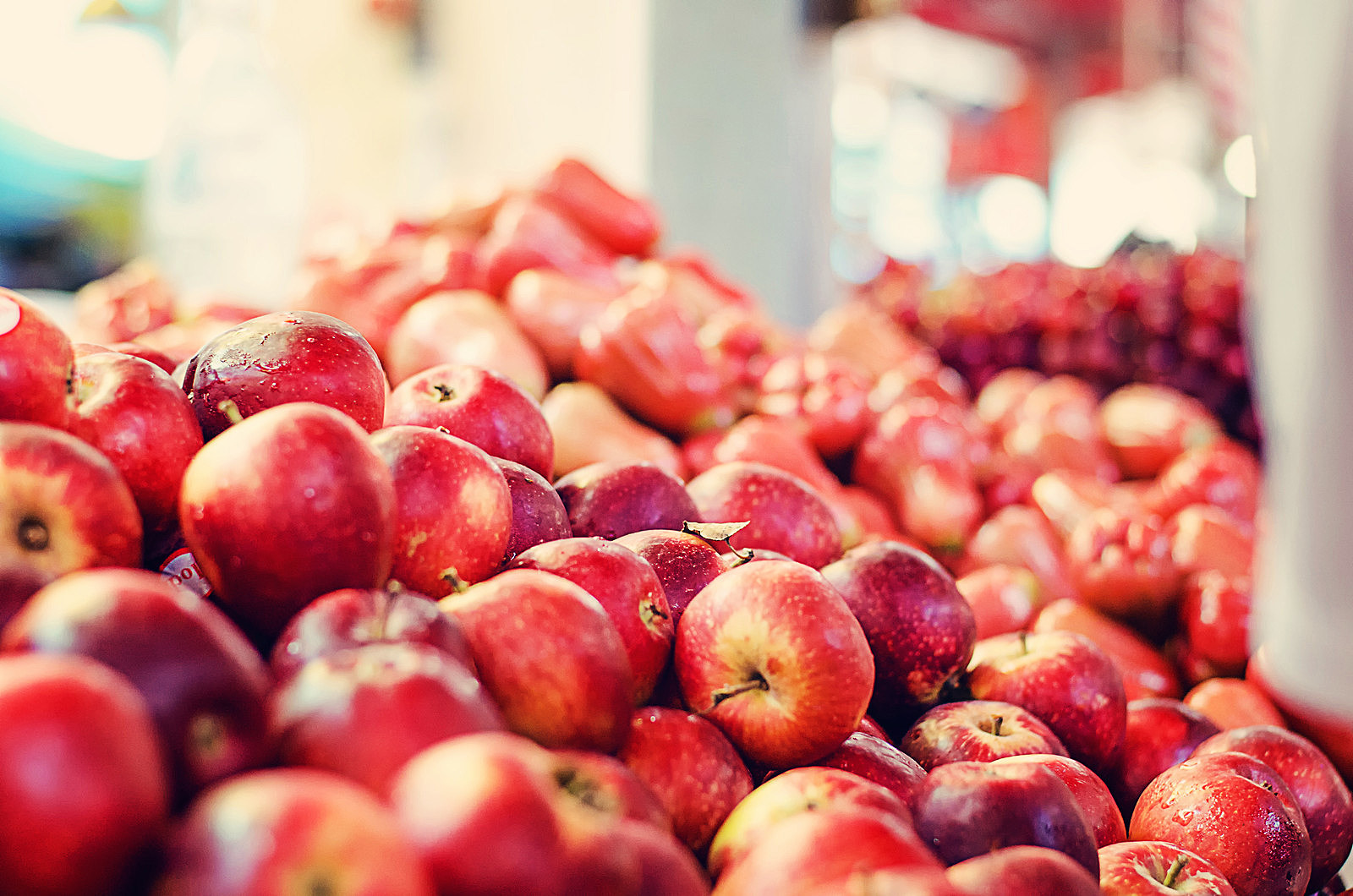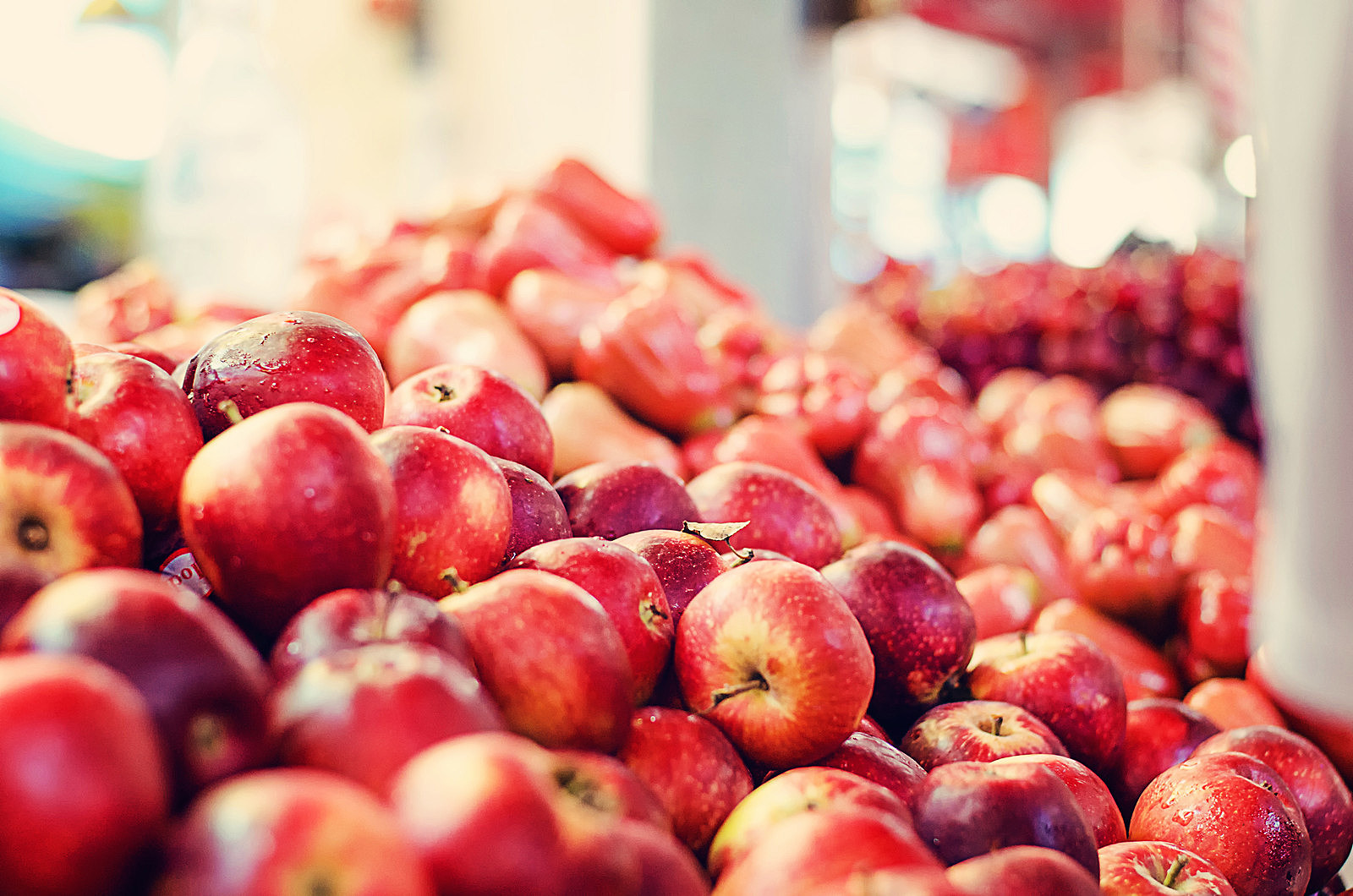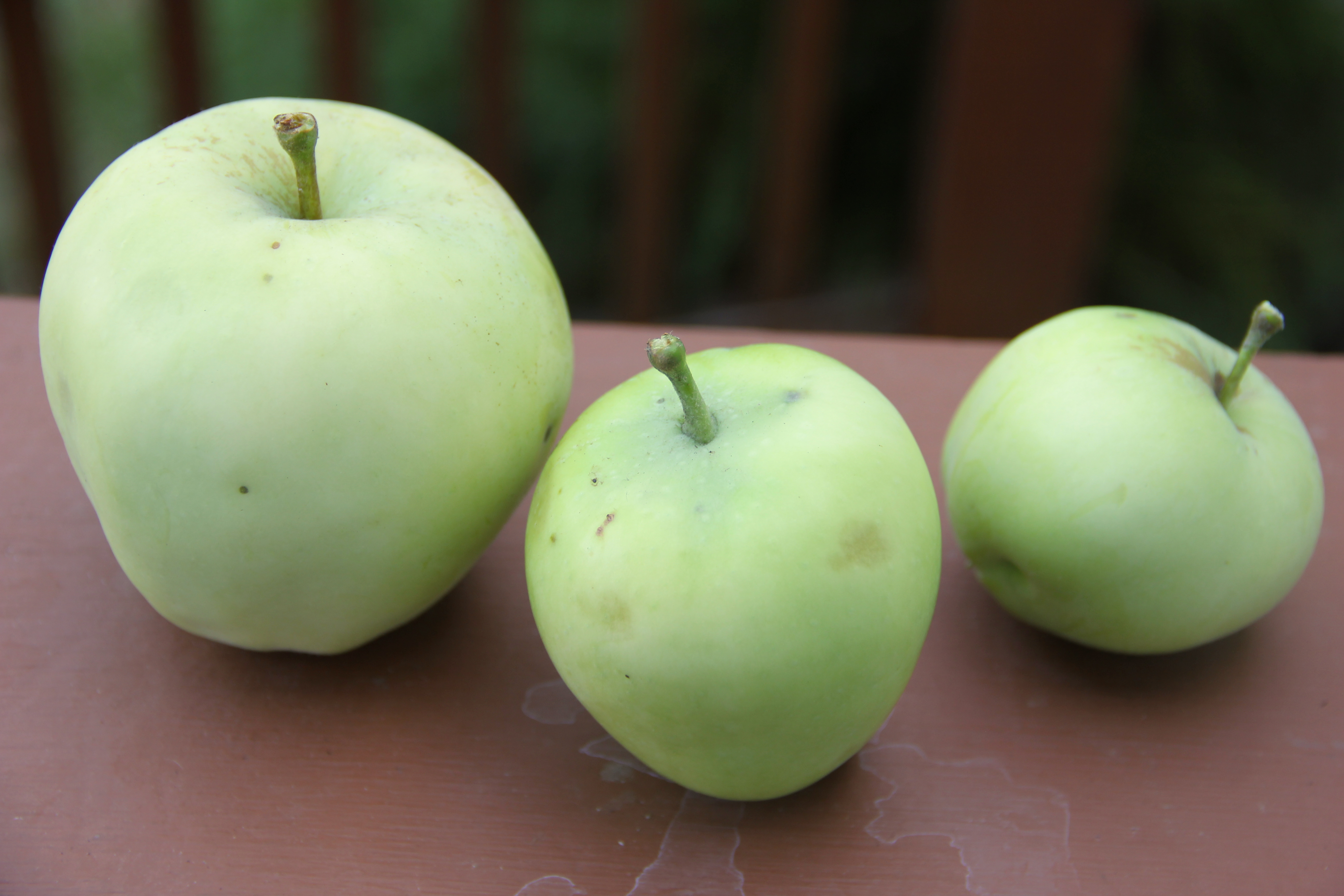Understanding The Bushel Measurement For Apples

Apples are commonly measured in bushels, but what exactly does this term mean? A bushel is a unit of volume that is equivalent to 32 quarts. It is used to measure dry commodities such as apples, grains, and vegetables. While it measures volume and not weight, the weight of the fruit in a bushel can vary depending on factors such as the size and weight of the individual apples, as well as the packing density and storage considerations. Accurate bushel measurements are important in the commercial industry and adhere to regulatory standards to ensure consistency and fairness in trade.
Bushel Measurement Definition And History
The bushel is a unit of volume that is commonly used to measure dry commodities such as apples. It has a long history and was originally based on a measure of grain. In the past, a bushel was defined as a specific size of a willow basket with fixed dimensions. Over time, the measurement has evolved, and today a bushel is generally understood to be equivalent to 32 quarts or 8 gallons. This standardized measure ensures consistency and fairness in trade.
How Bushel Measurement Applies To Apples
Bushel measurement is commonly used to quantify the volume of apples. It provides a standardized unit of measurement for traders, growers, and consumers to accurately determine the quantity of apples being bought or sold. By using bushel measurements, it becomes easier to compare prices and ensure fairness in transactions. Additionally, bushel measurements are crucial for inventory management and estimating storage capacity. The consistent use of bushel measurements allows for efficient handling and transportation of apples, streamlining the supply chain from production to consumption.
Factors Affecting The Number Of Apples In A Bushel

The number of apples in a bushel can vary depending on several factors. These factors include the size and weight variations of the apples. Smaller apples will result in a higher count per bushel, while larger apples will result in a lower count. Additionally, the packing density of the apples can affect the number in a bushel. Careful packaging can maximize the number, while loose packing can decrease it. Storage considerations also play a role, as apples can shrink or lose weight over time. Therefore, it is important to consider these factors when estimating the number of apples in a bushel.
Size And Weight Variations Of Apples
Apples come in various sizes and weights, which can affect the number of apples in a bushel. Smaller apples, such as those measuring around 2 inches in diameter, will result in a higher count per bushel compared to larger apples. On the other hand, larger apples, measuring around 3 inches or more, will result in a lower count per bushel. The weight of the apples is also a factor, as heavier apples will take up more space and potentially decrease the overall count in a bushel. Additionally, different apple varieties can have varying sizes and weights, leading to further variations in bushel counts.
Packing Density And Storage Considerations
Packing density and storage considerations play a crucial role in determining the number of apples that can fit in a bushel. The way apples are packed within a bushel basket affects the overall density of the apples, which in turn impacts the total count. Apples should be arranged in a way that optimizes space while ensuring they are not damaged or bruised. Additionally, proper storage conditions, such as temperature and humidity levels, are essential to maintain the quality and freshness of the apples. Storing apples in a cool, dry place can help prolong their shelf life and preserve their flavor.
Calculating The Number Of Apples In A Bushel

Determining the exact number of apples in a bushel can be challenging, but there are some guidelines to help with estimation. The standard size for a bushel of apples is approximately 42 pounds, and on average, three apples weigh about one pound. Based on this, it can be estimated that a bushel of apples contains around 126 apples. However, it is important to note that the actual number may vary depending on the size and weight of the individual apples. To achieve a more accurate count, mathematical formulas can be used, taking into account the average weight of the apples and the net weight of the bushel container.
Standard Bushel Size For Apple Measurement
The standard bushel size for apple measurement is approximately 42 pounds. This measurement is commonly used in the industry to determine the quantity of apples in a bushel. It is important to note that the actual number of apples in a bushel may vary depending on the size and weight of the individual apples. However, using the average weight of three apples per pound, it can be estimated that a bushel of apples contains around 126 apples.
Mathematical Formulas To Estimate Apple Count
When it comes to estimating the number of apples in a bushel, mathematical formulas can provide a more precise calculation. One commonly used formula is to multiply the weight of the bushel by the average number of apples per pound. For example, if the bushel weighs 42 pounds and there are 3 apples in each pound, the estimated apple count would be 126 apples. Another formula involves dividing the weight of the bushel by the average weight of individual apples. These formulas can be helpful in ensuring accuracy when counting apples in a bushel.
Importance Of Accuracy In Bushel Measurement

Accurate bushel measurements are crucial in the apple industry for various reasons. Firstly, it ensures fair trade practices, as buyers and sellers rely on accurate measurements to determine the value and price of apples. Secondly, accurate bushel measurements help with crop planning and forecasting, allowing farmers to estimate yields and make informed decisions. Additionally, proper measurement compliance ensures consistency and reliability in apple marketing and distribution. Regulatory standards for apple bushel counts further emphasize the importance of accuracy in maintaining transparency and accountability in the industry.
Commercial Implications Of Accurate Bushel Measurements
Accurate bushel measurements have significant commercial implications in the apple industry. Buyers and sellers rely on precise measurements to determine the value and price of apples, ensuring fair trade practices. Accurate bushel measurements also aid in crop planning and forecasting, allowing farmers to estimate yields and make informed decisions. Compliance with proper measurement standards promotes consistency and reliability in apple marketing and distribution. Regulatory standards for apple bushel counts further emphasize the importance of accuracy, maintaining transparency and accountability in the industry.
Regulatory Standards For Apple Bushel Counts
Regulatory standards for apple bushel counts play a crucial role in ensuring fair trade practices in the industry. These standards define the precise measurement and weight requirements for a bushel of apples, ensuring consistency and accuracy in the marketplace. In the United States, the regulatory standard for a bushel of apples is set at 42 pounds. This standard helps establish a common benchmark for buyers and sellers, promoting transparency and accountability in apple marketing and distribution. Compliance with these standards is essential to maintain the integrity and reliability of apple bushel measurements.
Methods To Estimate Apple Quantity In A Bushel

There are various methods available to estimate the quantity of apples in a bushel. Here are a few commonly used techniques:
- Visual estimation: Experienced apple growers and pickers can visually estimate the number of apples in a bushel based on their size and density. This method requires practice and familiarity with different apple varieties.
- Measuring tools: To achieve more precise measurements, some individuals use measuring tools such as volumetric containers designed specifically for bushel measurements. These containers have markings indicating the appropriate volume for a bushel of apples.
By utilizing these estimation methods, growers and sellers can ensure the accuracy of their apple bushel counts, promoting fair trade practices in the industry.
Visual Estimation Techniques
Visual estimation techniques involve the ability to visually estimate the quantity of apples in a bushel based on their size and density. Experienced apple growers and pickers can develop this skill over time through practice and familiarity with different apple varieties. By closely observing the apples and considering their overall size and how tightly they are packed, they can make an estimate of the number of apples in a bushel. While this method may not provide precise measurements, it can be a useful tool for quick estimates in situations where measuring tools may not be readily available.
Use Of Measuring Tools For Precision
When it comes to accurately measuring the number of apples in a bushel, using measuring tools can provide more precise results. Measuring tools like scales and measuring cups allow for precise measurements of weight and volume. By weighing the apples or measuring their volume, growers and pickers can calculate the exact number of apples in a bushel. This level of precision is particularly important in commercial settings, where accurate measurements are crucial for pricing, inventory management, and meeting regulatory standards. Measuring tools ensure consistency and accuracy in determining the quantity of apples in a bushel.
Conclusion

In conclusion, accurately counting the number of apples in a bushel is essential for various purposes, such as pricing, inventory management, and meeting regulatory standards. The size and weight variations of apples, as well as packing density and storage considerations, can affect the number of apples in a bushel. While visual estimation techniques can provide a rough estimate, the use of measuring tools like scales and measuring cups ensures precision. It is crucial to adhere to the standard bushel size and employ mathematical formulas for accurate apple count. Achieving accurate bushel measurements guarantees consistency and reliability in the apple industry.
Summary Of Key Points On Counting Apples In A Bushel
Counting the number of apples in a bushel is important for pricing, inventory management, and meeting regulatory standards. Factors such as the size and weight of apples, as well as packing density and storage considerations, can affect the number of apples in a bushel. To achieve accuracy, it is crucial to adhere to the standard bushel size and use mathematical formulas for apple count. While visual estimation techniques can provide a rough estimate, the use of measuring tools like scales and measuring cups ensures precision. Accurate bushel measurements guarantee consistency and reliability in the apple industry.
Practical Tips For Accurate Apple Bushel Measurements.
To ensure accurate apple bushel measurements, here are some practical tips to follow.
- Use standardized bushel containers: Use containers specifically designed to hold a bushel of apples, ensuring consistency in volume measurement.
- Follow proper packing techniques: Pack the apples tightly, filling all the gaps in the container. This will maximize the number of apples in the bushel.
- Utilize measuring tools: To achieve precision, use scales or measuring cups to accurately weigh or measure the apples. This eliminates any guesswork or estimation errors.
- Take multiple measurements: To account for variations in apple size, repeat the measurement process several times and calculate an average to obtain a more accurate count.
By implementing these practical tips, you can ensure precise apple bushel measurements, resulting in reliable inventory tracking and pricing processes.
FAQ About Apples In A Bushel: Counting The Number Of Apples In A Bushel Measurement
Q: What is a bushel measurement in terms of apples?
A: A bushel is a unit of measurement commonly used for apples and other fruits. It is equivalent to 42 pounds or around 48 to 50 medium-sized apples.
Q: How many apples are typically in a bushel?
A: The number of apples in a bushel can vary depending on the size of the apples. On average, a bushel of apples can contain around 125 to 150 apples.
Q: How can I accurately count the number of apples in a bushel?
A: To accurately count the number of apples in a bushel, you can use a scale to weigh the apples and divide the total weight by the average weight of a single apple.
Q: Are there different types of bushels for measuring apples?
A: Yes, there are different types of bushels used for measuring apples, such as the dry bushel and the liquid or wet bushel. It’s important to use the appropriate bushel type based on the context of measurement.
Q: Can I estimate the number of apples in a bushel without weighing them?
A: While weighing the apples is the most accurate way to determine the number in a bushel, you can use visual estimation methods based on the size and packing density of the apples. Keep in mind that this method may not be as precise as weighing.

Boise Co-op Wine Shop is the Treasure Valley’s ultimate destination for wine enthusiasts. With a focus on providing an exceptional selection of wines, our North End Wine Shop and robust wine departments cater to our valued customers’ diverse tastes and preferences. Founded to bring the finest wines to our community, Boise Co-op Wine Shop has established itself as the go-to source for quality and variety. Our commitment to offering an extensive range of wines ensures that every visitor can find the perfect bottle for any occasion, whether it’s a special celebration or a casual gathering.